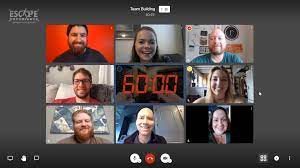As we move into the new year, we continue to feel the effects of the COVID-19 pandemic. Many businesses are running their operations with a partially or fully remote workforce considering the situation.
According to Gallup’s Analytic Workplace report, more than 43 percent of employees in the US have switched to remote working. It doesn’t end here as over 77 percent of remote employees believe that they are more productive and creative when working from home.
Despite these statistics, transitioning employees from workspace to a home setup is quite demanding for companies during these turbulent conditions. It becomes even more challenging when businesses add new members to the team.

Some fields, such as tech and digital marketing, may have an easier time transitioning to a fully remote office environment. But team managers for companies in other fields may need to work a bit harder to rewire processes to keep the functions running and a remote team connected.
In order to aid in this process, here is a list of tips to help organizations keep remote employees connected and make the most of their skills.
7 Steps to Keeping Remote Teams Connected

1. Leverage the Right Tools
Using the right tools for communication and collaboration is crucial to managing remote teams. The market has plenty of collaboration tools you can pick to manage a productive and robust team. Choosing the tools that fit your needs the best will streamline communication.
2. Establish Trust
It goes the same for both managers and employees. If you’re a remote employee, allow your team leader to embrace risk and explore new ideas. They might need to get creative about devising new plans, playing team management games, celebrating team birthdays, sending packages, or holding conference calls. You need to support them by cooperating and participating.
On the management side, make sure you provide feedback and solve issues right away to maintain trust. Also, keep employees updated regarding goals met, team progress, customer reviews, and new policies. Address challenges your workers face to help them build trust and morale.
3. Ensure New Employees Have Required Office Supplies
Managers need to create a comprehensive list of necessary software, hardware, and office supplies essential for remote working. A laptop, for instance, is the primary device employees need for the job. These are a few things managers need to consider when creating this list.
If the company’s IT department provides these resources to the employee, it is the responsibility of managers to ensure everything is in order before an employee starts working remotely. They need to confirm that employees have received and adequately set up necessary equipment before the working day.
If the employee is responsible for arranging their resources, managers need to ensure they have purchased and/or set up everything correctly.
4. Seek Feedback from Employees
One of the best ways for companies to build a strong cultural environment on or offline is for senior management to listen to employees.
You don’t necessarily need to implement frequent happy hours or purchase a flat screen to make employees happy. You simply need to listen to your workers and make them feel heard. Seeking their feedback for the company’s policy and new decisions is a good idea to understand their point of view.
You can ask for their suggestions for adding training, improving client satisfaction, and incorporating activities to make remote working fun. Actively seeking employees’ opinions on different things keeps them onboard and connected. It also contributes to strong company culture by fostering communication and celebrating diverse ideas and points of view.
5. Make Video Conferencing a Mandatory Part of the Job
Supporting team members is an essential aspect of remote team management. Managers can achieve this by hosting video calls when dealing with remote workers. Through video conference calls, new employees can speak to other members and improve relationships.
The manager must make sure to invite team members to different video calls. These calls can help maintain communication or reassurance from the manager. They can facilitate virtual meetings with teammates.
6. Encourage Employees to Participate in Online Chats
Apart from video conference calls, an accessible and advanced chat tool can help make remote working easy and convenient for both managers and remote workers.
If it is an employee’s first day, it can be tough to approach the right person. He may have many questions and concerns in mind. Many queries are minor and don’t require a call to the manager every time an employee wants to ask something.
An ongoing chat tool can be of great help, and one-way employees can ask questions without hesitation. The staff can interact with the managers and get the answers promptly.
7. Show Appreciation
Paychecks aren’t the only way to recognize the efforts of your remote employees. It is essential to share your positive feedback when employees meet their project goals. When managers show their appreciation, it motivates and connects employees.
According to some recent studies, positive feedback and employee appreciation from managers can motivate the workers more than a monetary incentive. So, it is important to acknowledge the suggestions and ideas from your remote employees. It helps them take more responsibility and grow professionally.
Consider pairing monetary benefits with employee acknowledgment on special occasions to ensure your remote workers get what they deserve and stay connected.
Keeping remote teams connected can be a challenge. Luckily, there are tools like Kudoboard for Office Admins which offer simple and creative ways to enhance virtual team engagements, and maintain a positive work environment, even when you’re not in the same physical location.
Summing Up
Taking a few quick steps can keep employees engaged and connected. This can make the entire process of transitioning to remote working simple and smooth for the company and managers.
Managers can create a digital mutual working environment through chat tools, video calls, conference meetings, and remote training. Plus, managers need to maintain a constant communication system to make remote employees feel connected.





